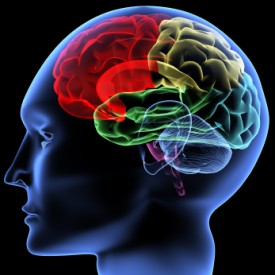The Kinesthetic Learner vs. Tactile Learners
On this blog, in the course of discussing kinesthetic learning strategies, we often talk about the kinesthetic learner as if he or she is no different from tactile learners. Is this the case?
This is a topic on which there is some disagreement.
Some theorists view kinesthetic learners and tactile learners as one and the same. They classify both within a single group, sometimes going so far as to call those it describes kinesthetic-tactile learners or tactile-kinesthetic learners. And, therefore, in their view, we can effectively apply the same kinesthetic learning strategies for students of both these types.
However, other theorists make a distinction between those with the kinesthetic learning style and tactile learners. They stress that kinesthetic learning has more to do with actually physically moving the large muscle groups of the body, as we do when walking, running, jumping, dancing and so on, whereas tactile learning, in their view, has to do with the actual sensation of touch on our skin.
Obviously, depending on who we agree with, it could influence our approach to students in this category (or these categories, as the case may be.)
Perhaps the safest way to deal with the issue is to simply always aim to include at least some kinesthetic learning activities that are also tactile and some tactile learning activities that are also kinesthetic. Not only will this ensure, just in case there are subtle differences between the groups, that both types of students can work in the way that is optimal for them. But, perhaps the combination of both methods will help enhance learning for all of these students beyond what is possible using only their preferred modality in isolation.
In addition, kinesthetic learning strategies that combine these modalities can sometimes just be a lot more fun!
Ultimately, researchers will have to determine what the truth really is about the relationship between these learning styles. Only with more investigation can we answer questions about exactly how they interact and what is the best way to engage them. Hopefully, in the future, we will have a clearer understanding to help us tailor our approaches even better in this area.
One thing that people do seem to agree about, however, is that whether they are one group or two groups, kinesthetic and tactile learners represent a very small proportion of the population. So, both are in danger of not receiving the amount and kind of attention that they need and deserve. That is why it is important that, whatever our view on the relationship between them, rather than get too caught up in debating our opinions, we channel our energies into working to make sure that these students receive the best education that we can provide. Furthermore, it is important that we help them come to understand their own learning styles and how best to use them throughout their lives.
Both kinesthetic and tactile learners have a great deal to offer to society and kinesthetic learning strategies, especially when they also involve a tactile element, can help those in this group (or these groups) reach their highest potential.
If you benefited from this post and want to contribute, please
Kinesthetic Learning Strategies for Various Subjects Helping a Kinesthetic Learning Child Prepare for Visual or Oral Tests: A Reader Question

This subject just happens to be our subject in class this week(learning styles) and I found the information stated about both theories very interesting and it gave me something new to bring to the classroom forums. Thank you!
thanks you helped alot
I was just wondering: what are some good resources for reading on specific subtypes of kinesthetic/tactile learners?
Hi Dixie.
Can you clarify which kinds of subtypes you’re referring to?
Any subtypes or nuances in kinesthetic and tactile (non verbal-linguistic) learners
Hi Dixie,
That is an interesting question. Can you elaborate on it?